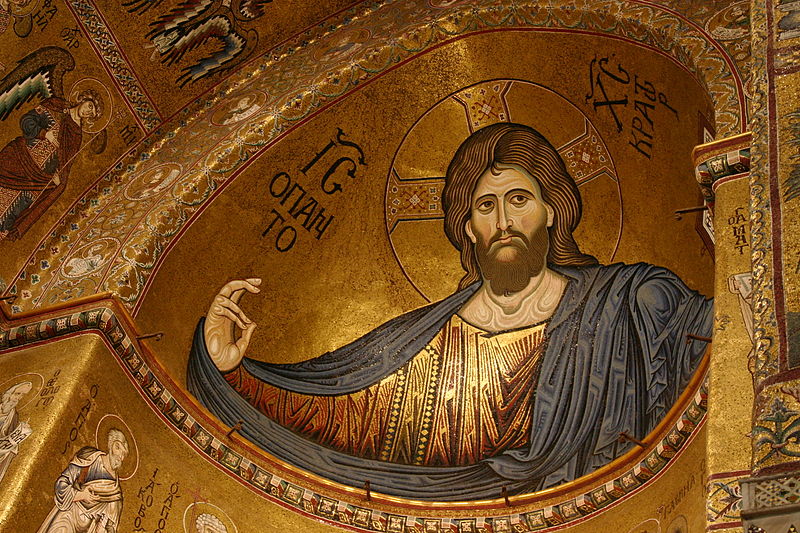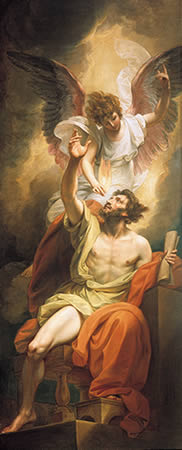1st December 2021
Advent: Watching for What?
Stefan Kaminski
By the time we enter Advent, the commercial world has already well-established a Christmas atmosphere with trees, decorations, and all sorts of enticing offers. Such sights might fill our minds with lists of presents to be bought and dinners to be planned. Regardless of the feelings that these thoughts might generate, what will certainly be true is that Christmas will be upon us sooner than we think, and will find most of us in a frenzy of activity.
In the (hopefully) recollected calm of our churches, the liturgical celebration of Advent will soon resound with John the Baptist’s cry to “prepare a way for the Lord”, Isaiah’s prophecies of a maiden with child, and strains of “O Come, O Come, Emmanuel”. What is easily overlooked though, is the very different note struck by the liturgy of the First Sunday of Advent.
In all three yearly cycles of readings, the Gospel is very deliberately orientated well beyond the feast of Christmas, at least in its most immediate sense. The beginning of Advent, year on year, presents us with Jesus’ admonition or warning to his disciples to “stay awake” or “watch”, so that we might be ready for His coming in power and glory at the end of time. A rather marked contrast to the child in the manger, surely?
On the other hand, this might seem like a neat way to segue to John the Baptist’s call, given that the previous weeks had closed the liturgical year with increasingly apocalyptic and tempestuous readings, culminating with the feast of Christ the King.
So is this simply the liturgy’s way of transitioning us to yet another lap, like a toy train on its oval track? No. The liturgy is deliberately providing us with the proper context for the expectation with which we are to prepare for the celebration of Christ’s first coming. The feast of Christmas signals the beginning of the end.
As the letter to the Hebrews reads: “in these last days, God has spoken to us by the Son.” Having spoken to us over the previous millennia in various ways through the prophets, God has spoken the “Word”: the Word who was in the beginning, who was with God and was God (cf. Jn 1:1). When we celebrate the incarnation of God Himself into our world, His “emptying Himself and taking the form of a slave” (Phil 2:7) as St Paul puts it, we celebrate not an isolated event, but one that stretches back into the past, and reaches into the future.
This event points us back to the beginning, to its raison d-être. It takes us back to the very first man, who was fashioned in the form that God was to reveal Himself in. It reminds us that our first parents, made from whatever earthly material God chose to breathe life into and to create in His image and likeness, turned away from Him and rejected that first offer of His love. It reminds us that for the thousands of years that passed between that event and Jesus Christ, God was forming and re-forming covenants with a people in order to prepare the way for His incarnation. It reminds us that He only became man to die on a cross. It reminds us that the culmination of the liturgical year is therefore yet to come at Easter. It reminds us that having paid the price of our redemption, Jesus Christ is like the “man travelling abroad: he has gone from home, and left his servants in charge, each with his own task” (Mk 13:34).
Having apparently stepped back from the world, it seems God has left man in charge, left him to wreak his own designs on the world. The words of Isaiah might seem to ring as true today: “No one invoked your name or roused himself to catch hold of you. For you hid your face from us and gave us up to the power of our sins” (Is 64:7). On the one hand it seems we are quite content that way; we seem to like to believe that we are quite capable of ordering our world ourselves. On the other hand, the evidence points to the contrary. But when things go wrong, instead we say, ‘God cannot possibly exist.’
So for those who profess belief and await “the revealing of the Sons of God” (Rm 8:19), Advent seems to be a time of being caught between two rather distant events: the already of Christ who has come, and the not-yet of Christ who is to come. Advent lives this polarity, and in its liturgy effects a transition from the second to the first. It begins with texts which speak of Christ’s second coming, and as Christmas draws closer, it shifts to the first coming at Bethlehem.
But what it invites us towards, in an unspoken way, is the hidden coming of Jesus Christ in our hearts; the manifesting of the Kingdom of Heaven which for now cannot be said to be here or there, but which begins with the seed of the Word being planted in our souls. Advent seeks to prepare our hearts through a rapid shift of focus from the future, glorious, terrifying, earth-shattering universal spectacular of the second coming, to the quiet, still, humble and intensely personal event in the Bethlehem stable. These two polar opposites are part of the same single, drawn-out event that is humanity’s adventure with God.
Watch! Watch that scale of magnitude narrow down from the future and the past, to the now; from the universal to the personal, from everyone to you. Stay awake, because the God of the universe knocks at the door of your heart, and awaits for you to open. Be on your guard, because he has left each with his own task, and he must not find you asleep.



